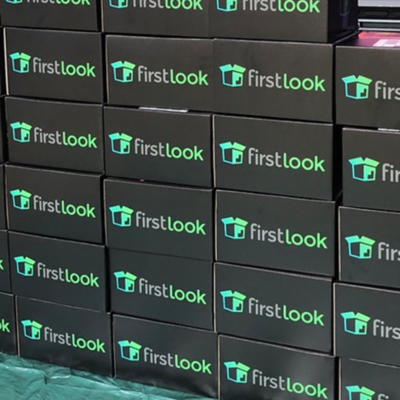
Founder Cassandra Grey Partners With Private Equity Investor To Buy Violet Grey Back From Farfetch
Violet Grey is back in the hands of founder Cassandra Grey.
Earlier in the summer, she bought the beauty e-tail and content destination with private equity investor Sherif Guirgis, currently partner at 888 Midas Partners and formerly managing director at Main Street Advisors, partner at Lion Capital and associate at Apollo Global Management, from fashion e-commerce company Farfetch. Terms of the deal weren’t disclosed.
Violet Grey’s announcement of the transaction confirms reporting last week by publication Puck News, which characterized the company’s sale price as “super-duper cheap.” The publication Business of Fashion reported in October last year that Farfetch was selling the e-tailer. The company acquired Violet Grey for roughly $50 million in cash and stock in January 2022.
With the transaction, Guirgis has become CEO and chair of Violet Grey. Grey will serve as a member of the executive board and, according to a press statement from the company, provide strategic support in shaping its “creative vision, retail expansion, and revenue growth.” She’s also become artistic director and chair of Violet Lab, the brand development offshoot of Violet Grey.
In the statement, Grey says Violet Grey “was founded with a simple, straightforward mission—to enable customers to feel confident in their purchase decisions. Our product is trust, as we have earned that trust by partnering with those who are the best at what they do. We have the utmost confidence in Sherif joining us as CEO and chairman to continue our mission as an exceptional business leader with an entrepreneurial spirit.”

Violet Grey had been in limbo since Farfetch shuttered its beauty vertical in August last year as it struggled with profitability and spiraling costs. South Korean e-commerce giant Coupang subsequently acquired Farfetch for $500 million. Grey was previously a beauty advisor at Farfetch and co-founder of NGG Beauty, an in-house beauty brand incubator that was an arm of Off-White parent company New Guards Group. Farfetch purchased New Guards Group in 2019.
Violet Grey increased revenues from slightly under $5 million in 2017 to $20 million by its sale to Farfetch. Prior to the sale, it amassed over $33 million in funding from venture capital firms and strategic organizations like Beauty Incubator Group, Beechwood Capital and Shiseido. Grey raised $2 million in seed funding to launch Violet Grey in 2013 with e-commerce and fashion executives Tiffany Bensley and Ariella Feldman.
A former Violet Grey executive who spoke to Beauty Independent under the condition of anonymity says Violet Grey was unprofitable when it sold to Farfetch. The executive says Grey views the business predominantly as a content producer rather than a commerce destination. Sales under Farfetch decreased 40% in 2022 and dipped again by the same amount in 2023, per Puck News.
“Selling to Farfetch was logical in that it helped to give Violet Grey scale it could not have attained on its own,” says Neil Saunders, managing director of retail at GlobalData. “Unfortunately, with the problems of Farfetch, it turned out to be a less than ideal partner in the end, but the fact Cassandra Grey remained close to the company and helped to guide it has put her in an ideal position to buy back the brand.”
Margarita Arriagada, founder and CEO of luxury makeup brand Valdé and former chief merchant at Sephora, takes a more critical view of Grey’s decision to sell to Farfetch. “I never expected that, in selling Violet Grey, anything about the concept would be good other than to Cassandra to recoup investment. I assume that’s the reason it sold,” she says. “I never thought it would influence or strengthen Farfetch or that Farfetch could yield leverage to Violet Grey in any way shape or form. Net net for the consumer, it was not a gain.”
Violet Grey has staked its reputation on curating luxury beauty brands that have been vetted by beauty industry and Hollywood insiders. Its so-called Violet Code involves those beauty industry and Hollywood insiders testing and approving products. Sarah Brown, formerly beauty director at Vogue, became executive director of Violet Grey’s Violet Lab in 2021 and oversaw the Violet Code. She became chief brand officer at Violet Grey as of March this year.
Augustinus Bader demonstrated the power of Violet Grey’s spotlight. The brand launched on its website in 2018, and the publication Airmail divulged that the partnership generated $1 million for it within eight months. Along with its site, Violet Grey runs a brick-and-mortar store on Melrose Place in Los Angeles. Additional stores could be a possibility for it.
“It’s not enough to be cool. The company really needs to find a way to make a healthy profit margin.”
Violet Grey carries over 120 beauty brands such as Augustinus Bader, D.S. & Durga, FaceGym, Eighth Day, Vintner’s Daughter, Dr. Barbara Sturm, Chantecaille, BeautyStat, La Mer, Le Labo, Oribe and Nécessaire. On its site, it lists Angela Caglia’s Cell Forté Serum With Biomsc, 111Skin’s Celestial Black Diamond Eye Mask, Fara Homidi’s Essential Lip Compact and Lyma’s Lyma Laser as bestsellers.
Tina Bou-Saba, a beauty industry investor, posits that steering Violet Grey to commercial success will likely be Guirgis’s top priority. “A private equity CEO will be laser-focused on ensuring a sound business model that generates healthy EBITDA [earnings before interest, taxes, depreciation and amortization],” she says. “It will actually have to make real money now.”
She continues, “It’s not enough to be cool. The company really needs to find a way to make a healthy profit margin as a retailer. It will be even harder to do so today. Multi-brand beauty retail is challenging. In general, selling other brands’ products is a thin margin business. You need a lot of volume to make it work…Some companies with this business model end up developing their own branded products. These have much higher margins and, of course, built-in exclusivity. Violet Grey may consider that.” The e-tailer had a plan to start a private-label line that hasn’t been executed, at least not yet.
Arriagada isn’t optimistic about Violet Grey’s future given its past shortcomings. “I think the concept needs a new set of owners that understand the vision of what Cassandra created and to develop a sustainable strategy that scales commerce, including stores,” she says. “Cassandra, in my humble opinion, is not that person, even with a partner CEO. The concept has too much history of turn, pivots, tension and inconsistencies of which ultimately she is responsible for. There is nothing that leads me to believe that it would be any different here.”
If the new management is to succeed, Arriagada argues Violet Grey should hone its points of difference. “Carrying a brand like Chanel, for example, though perhaps viewed as synergistic to Violet Grey, is not a point of difference,” she says. “At the end of the day, that is what helps ring the register: differentiated and desirable assortments, service, experience and consistency.”
Still, Saunders underscores Violet Grey’s reputation as a beauty tastemaker hasn’t been dulled despite its changing ownership. He says, “However, it really needs to double down on this as it is now a key USP [unique selling point], which is arguably more important for Violet Grey as an independent company.”
Farfetch’s dispatching of Violet Grey is just the latest example of fashion e-commerce distancing itself from beauty. Net-a-Porter is shuttering its in-house beauty business and shifting to an affiliate model directing beauty purchases to brands’ sites. In advance of the move, Net-a-Porter shrunk its beauty assortment in a last-ditch effort to salvage its wholesale beauty presence.





Leave a Reply
You must be logged in to post a comment.